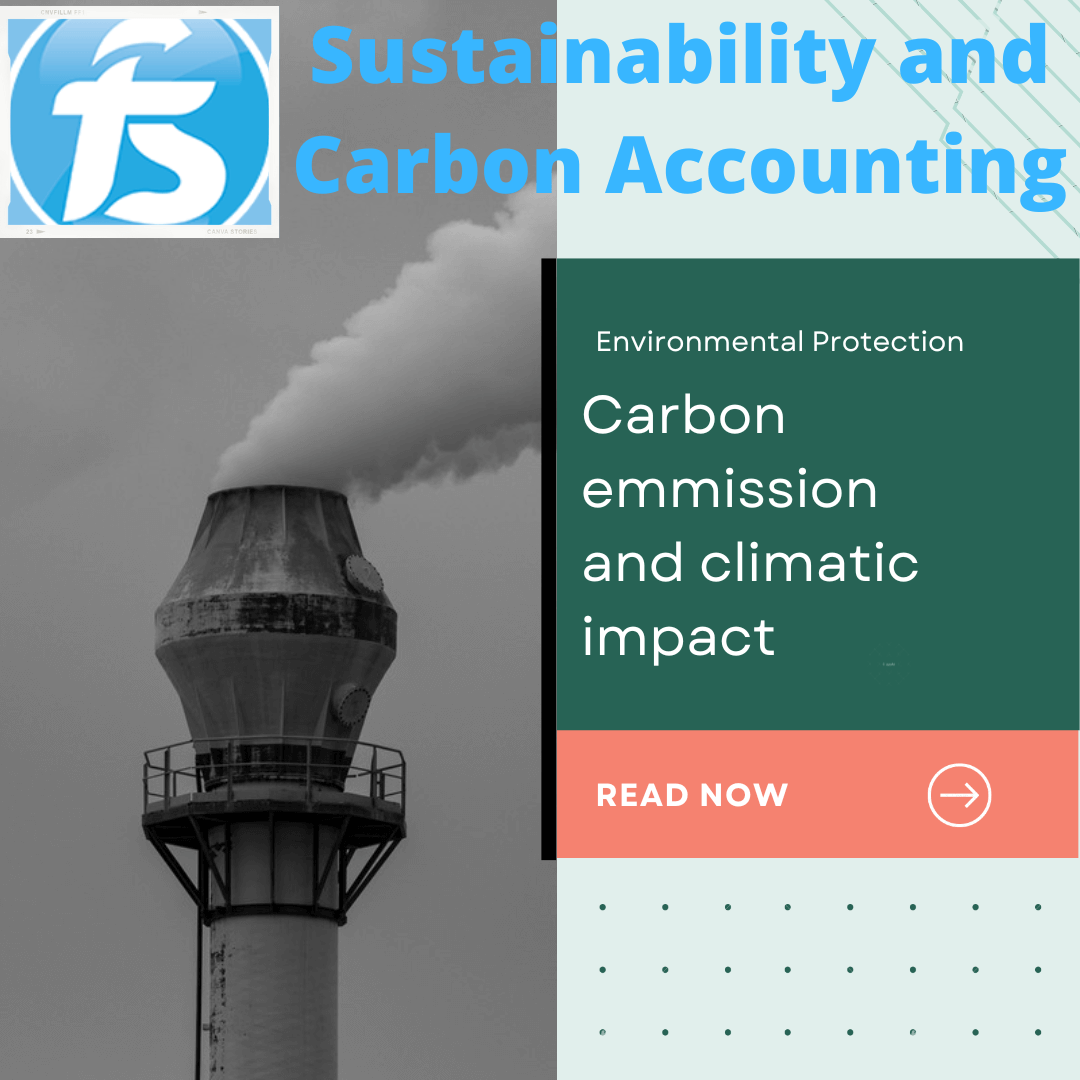
11 Jul, 2022 admin
Sustainability and carbon accounting is the emerging subject. The emission of co2 is natural but since many businesses due to certain activities increase its level, and this is where sustainability and carbon accounting is required.
Carbon Accounting
Carbon accounting is one of the major parts of sustainability management. It is all about knowing the emissions of carbon dioxide and its climatic impact. Carbon accounting is also called greenhouse gas accounting. It is to quantify the GHG emissions and set the limit of carbon dioxide in order to maintain sustainability in the environment.
Sustainability in a broad sense is the ability to maintain the environmental, economic, and social dimensions at a certain level with a proper ecological balance without the depletion of any of these dimensions.
In the accounting world, Sustainability is the maintenance of a company’s social and environmental aspects. And it is done through the practice of measuring, analyzing, and reporting the impacts associated with it.
Let’s understand Sustainability from a different perspective:
As per ACCA, “Sustainability reporting gives an understanding of an organization’s role in the society and contribution made towards it”.
As per ICAEW,” Sustainability describes a world of thriving economies and only societies based on what nature can afford”. Members in practice, as well as private individuals, have their own roles to play in order to meet the sustainability goals. Change in behavior to drive sustainable outcomes is being initiated by ICAEW.
Sustainability in financial accounting is a subcategory of financial accounting that mainly focuses on the disclosure of non-financial information to external stakeholders about a firm’s performance.
Role of Accountants in sustainability accounting
Accountants play a diverse role in promoting and reporting sustainability. They use their abilities to aggregate data into meaningful information and contribute to cost analysis of environmental decisions and also participate in the audit and assurance of corporate social reporting. Accountants know about reporting standards which are further helpful in reporting an entity’s sustainability performance.
Let’s understand SASB Standards (Sustainability Accounting Standards Board):
SASB is a set of standards that enables businesses around the globe to disclose and communicate to their investors with regard to financial-material sustainability. In a broader sense, the word sustainability in SASB refers to the corporate activities that are intend to create long-term shareholder value.
As per SASB, sustainability accounting is the process of measuring, managing, and reporting activities such as environment, human capital, social capital, business model and innovation, and leadership and governance. SASB standards provide guidance to identify what an organization must disclose by considering the unique circumstances of the organization and the key issues with regard to it.
Reasons behind the use of SASB Standards by Companies:
Companies need to tackle dynamism which brings a lot of challenges and also with opportunities. Globalization, Climatic change, Technological Innovation and Advancement, Limited Resources, and other environmental issues highly impact the operation of the business. So, in order to assess the impact of such issues companies use SASB Standards.
Importance of SASB Standards for Companies:
- It meets investor needs as SASB Standards is a major tool for the disclosure of financially material sustainability factors.
- They are cost-effective because of the use of specific disclosure that reduces costs by finding out the most relevant information.
- They are industry specific as industry-specific disclosure is use to find the issues that are likely to impact financial performance.
- The Standards can also be used with other frameworks and standards.
Guide for Implementing SASB
For Companies who are planning to integrate SASB standards into their core disclosure processes, SASB offers a reference document. This guide offers structure and is also a key consideration for businesses looking to integrate sustainable accounting standards into the functions and procedures of the business.
Major Considerations for the Implementation of SASB Standards for Companies:
- Integration of sustainability into the existing activities and practices and ensuring to meet the company’s objectives.
- Find out the key audience and their need with regard to sustainability information.
- Disclose standards that are most relevant as per the company’s circumstances.
- Consider SASB standards to disclose the information in a way that states the company’s long-term value creation.
- Continuously improve and upgrade the sustainability disclosure so that it provides the appropriate information to the stakeholders.
The following goals are assist for Issuers through SASB Implementation Guide for Companies:
- Identification of sustainability topics that are industry-specific which are essential to an investor.
- Effective disclosure of material information with regard to sustainability topics by improving the reporting procedures
- Recognizing the disclosure at the current state and performance to it accordingly
In March 2022, the International Sustainability Standards Board (ISSB) published the Exposure Draft IFRS S1 General Requirements for Disclosure of Sustainability-related Financial Information (General Requirements Exposure Draft) in order to provide primary users with a complete set of sustainability-related financial disclosures and another Exposure Draft IFRS S2 Climate-related Disclosure setting out the requirement in relation to the disclosure of information about climate-related risks and opportunities.
 Request A call Back
Request A call Back